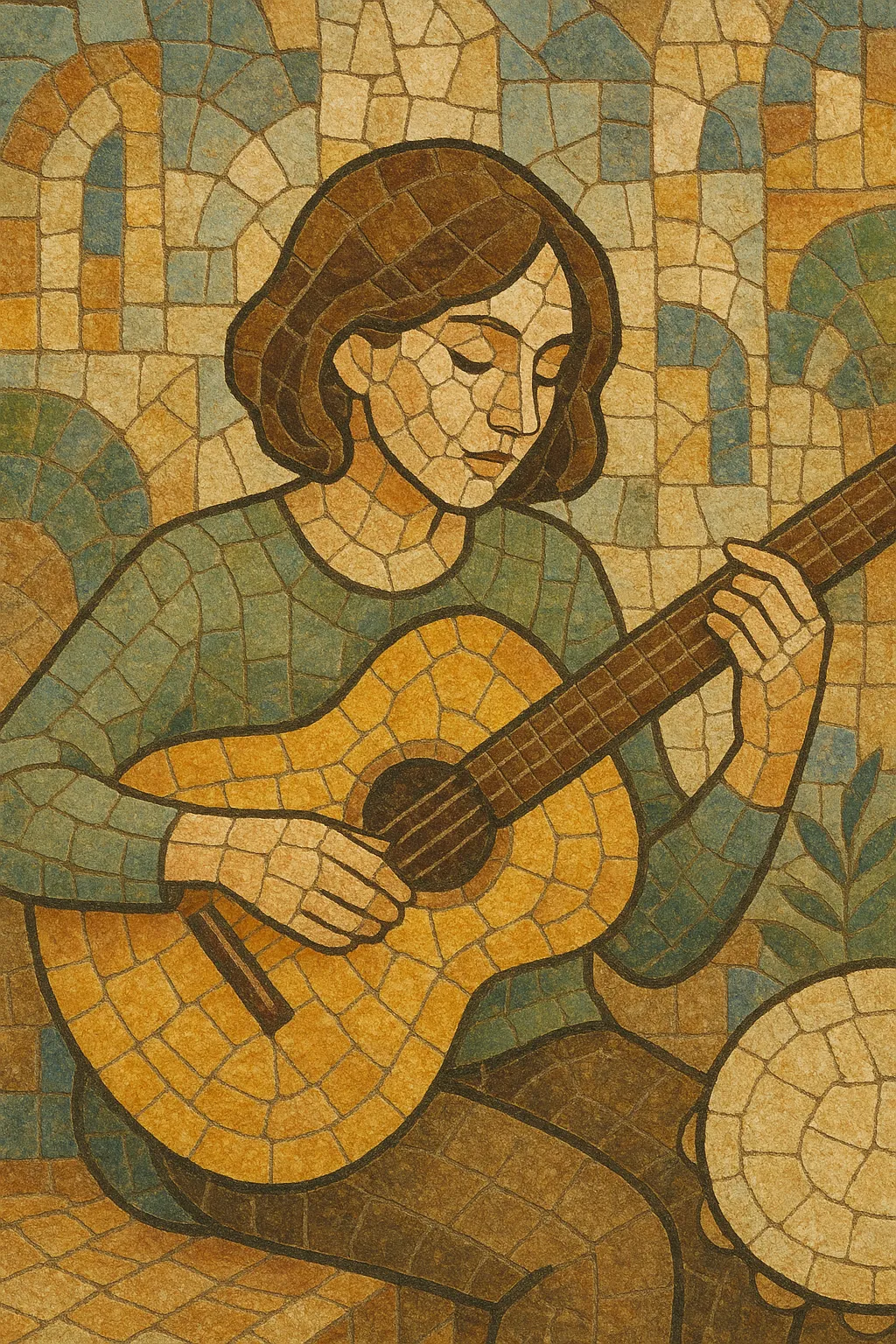Neo-acoustic (often nicknamed "neo-aco" in Japan) is a gentle, guitar-forward strain of indie pop that emphasizes clean acoustic textures, jangly strums, and intimate, soft-spoken vocals. It trades the brashness of rock for nuanced chord color, light percussion, and melodic bass lines.
The style draws heavily on British indie and the C86/twee movement, while folding in bossa nova’s relaxed syncopation and jazz-influenced chords. In Japan, the term came to denote a distinct indie sensibility—bookish, urbane, and romantic—that later fed into Shibuya-kei and various bedroom-pop and lo-fi currents.
Typical arrangements favor acoustic guitars, brushy drums, tambourine or hand percussion, subtle keyboards, and occasional strings or winds. Lyrics tend toward everyday romance, small-town or city nostalgia, and quietly reflective storytelling.
British indie pop and jangle pop laid the groundwork for neo-acoustic aesthetics: ringing guitars, understated rhythms, and tender melodic writing. The C86 compilation culture and Sarah Records scene refined a template of intimacy, while sophisti-pop and bossa nova suggested richer harmonies and easygoing grooves.
The term “neo-acoustic” gained traction in Japan to describe local indie artists who absorbed UK indie/twee ideals but preferred acoustic-centric arrangements and café-ready subtlety. Japanese musicians adapted those influences with clearer production, urbane lyrical themes, and a taste for continental pop (French chanson, bossa), setting a distinct mood separate from louder alternative rock.
Through the early–mid 1990s, neo-acoustic intertwined with the rising Shibuya-kei ecosystem. Labels and scenes around Tokyo championed soft, literate pop that nodded to 1960s sunshine pop, lounge, and bossa nova. While Shibuya-kei grew increasingly eclectic and sample-savvy, neo-acoustic persisted as its tender, guitar-led counterpart.
The 2000s brought a quieter revival via indie folk, lo-fi indie, and bedroom pop. Streaming-era curation further spotlighted neo-acoustic’s timeless qualities—intimacy, clarity, and melodic warmth—making it a recurring reference point for songwriters seeking gentle textures and nostalgic sentiment.
Start with a clean, bright acoustic guitar as the focal point. Use light, brushy drums, soft tambourine, and a warm, melodic bass. Add minimal keys (electric piano, gentle organ), glockenspiel, or a small string part for color.
Lean on major-key progressions flavored with jazz and bossa colors: maj7, add9, and 6th chords are common (e.g., Imaj7–vi7–ii7–V7 or I–iii–vi–IV with added 7ths/9ths). Keep melodies singable and lyrical, often moving stepwise with tasteful leaps at cadences.
Favor mid-tempo feels (≈90–120 BPM). Use lightly syncopated strums and bossa-tinged subdivisions, but avoid heavy backbeats. Percussion should feel airy: brushes, shakers, rim-clicks, and subdued tambourine.
Write intimate, everyday scenes: city walks, small romantic moments, letters, and wistful memories. The tone is gentle, reflective, and sincere—avoid cynicism and melodrama.
Capture warmth and clarity. Double-track acoustics subtly, pan for width, and use soft room or plate reverbs. Keep compression light to preserve dynamics. Prioritize natural performance over heavy editing.
Typical forms are compact: intro–verse–chorus–verse–bridge–chorus. Build dynamics by layering light textures (hand percussion, counter-melodies) rather than increasing volume. Endings often resolve softly rather than with big finales.
Use thin or fingerstyle picks and fresh strings for sparkle. Track vocals close to the mic for intimacy. Let the bass line be melodic but supportive, weaving around the vocals without crowding them.


